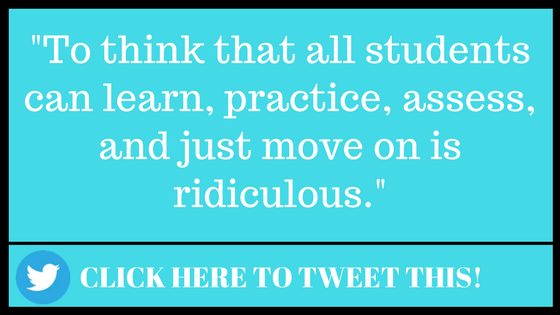Let Freedom Ring in Your Classroom!
When the bell rings, is it the ring of freedom or that of condemnation for your students at the start of class? Freedom is something that we hold very dear to our hearts in this country. We wave flags to celebrate it, our soldiers sacrifice their lives to protect it, and we tout it as one of the most defining factors of the United States.
While I’ll admit that intro was probably a bit much…I still want to ask you: Do your students have the freedom to learn in your classroom? While visiting teachers in their classrooms, I still find instances of the traditional, outdated, and archaic model of instruction where a teacher is standing at the front of the room, delivering content (in their way) and expecting the students just to absorb it and grasp its meaning upon first listen.
This traditional model of direct instruction and ineffective lecture based content delivery leaves almost no freedom for your students to actually learn. They just passively accept their fate as non-engaged, un-inspired learners. They have little say in what they are doing or when, and even less accountability for their progress toward mastery of the content. In order to change this, I’d like to share 5 ways to give your students more freedom in your classroom.
1. Get out of your text book.
This is probably one of my biggest pet peeves, but simply by broadening your planning and lesson structure and getting out of your text book, you can increase freedom in your classroom. Your textbook is a tool, but when it is leaned on for every instructional event, it can become aggravating, cumbersome, and BORING for students. Start looking beyond the pages for more engaging activities, projects (PBL’s), and experiences for your students. This will increase student focus and allow them to have some choice in how they represent their learning, as well as how it takes place.
2. Give students multiple attempts.
Learning is a process, plain and simple. More importantly, it’s a continuous process that may happen differently for every individual learner. To think that all students can learn, practice, assess, and just move on is ridiculous. The concept of moving on when a student has failed an assessment is a direct indication that a teacher has not only accepted failure, but has acknowledged that the gaps created by that failure are ok and acceptable, even if they will be detrimental to future success.
Failure should be part of the process of learning, not the final step. In fact, this is one of the most common themes I have in my workshops and trainings.
FAIL = First Attempt In Learning. You can read more about that here if you want. We even made a free poster for you to hang up…it’s ok, I know you were thinking it anyway. Click here for that free poster!
3. Remove Fear From Your Classroom.
This idea is pretty simple, but it is a great step to increasing the freedom your students feel in your classroom. Think about how you manage, how you grade, how you assess, and even how you assign homework. Are any of these practices fear inducing for learners? Who has the control? Who has the ownership? Is your classroom authoritarian or welcoming? Reaching a balance of both control and freedom is huge in fostering student progress and motivation. Removing anything or modifying practices that increase student fear will always improve the freedom they have to learn.
4. Let Learners Set The Pace.
If you’ve ever seen me speak, or joined us in one of our live trainings, you probably knew this was coming. Pace is one of the most powerful variables you can control in your classroom. It can determine if a student is engaged, bored, or frustrated because of their current level of understanding. When we allow learners to set the pace, instead of dictating it to our students, they feel a greater sense of power. More importantly, differentiation and things like UDL become even easier to implement! The easiest way I have found to do this is Mastery Learning. I have also seen the use of stations or centers to allow more freedom for students.
[NEW TO MASTERY LEARNING? CLICK HERE TO LEARN MORE]
5. Trust Your Students.
The hardest thing about increasing the freedom your students have is releasing some of your control as a teacher. I want to be clear that increasing freedom does NOT mean that your classroom management has to suffer. In fact, I would argue that, when properly implemented, more structure, systems, and routines can facilitate more flexibility and freedom in your classroom, while increasing the effectiveness of your management.
By building relationships, setting clear expectations, and facilitating a welcoming environment, you can trust your students more. Without this trust you’ll most likely continue to try to maintain absolute control, and there will be little hope of getting learners to buy-in or experience the freedom you are looking to provide. Trust that they will do what they are supposed to do, that they want to learn, and most of all, that they all CAN learn if given the right environment.
So the next time that first bell rings to start your class, what will your students think? Will they smile as they consider the freedom they have? Or will they cower at the rule that you have over them and the lack of control they have? Here’s to hoping it’s the prior of those two scenarios. Let freedom ring…and let students learn.




